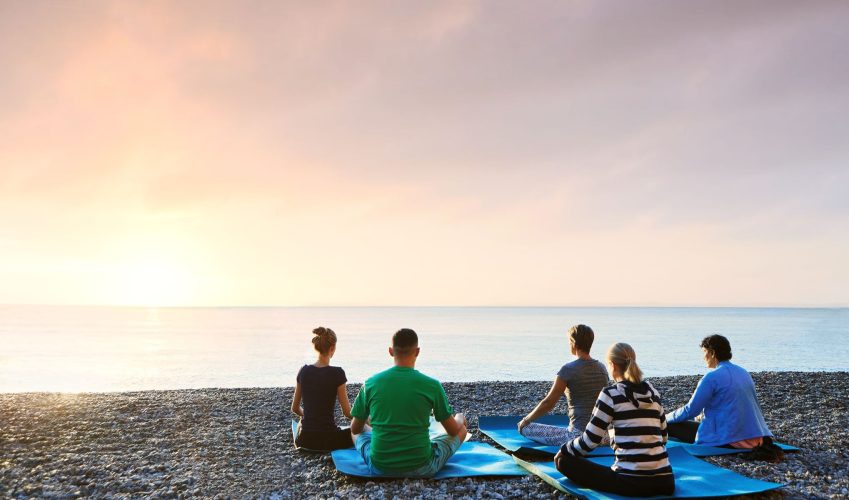If starting a meditation practice is one of your goals for 2020, I highly recommend defining your weekly intentions. I like the latter, as it allows one to focus on what is happening in the next few days, rather than a long-term plan. And remember, you can always restart at any time with a compassionate attitude towards yourself. When it comes to setting meditation intentions, consider the following basic guidelines:
- Time of Practice: Based on your routine and schedule, decide the best time of your day to practice your meditation. Personally, I enjoy early morning meditation. Choose the most convenient time that fits your schedule.
- Length of Meditation: Select your desired length of the audio meditation. Five minutes is a good (attainable) start. You can learn more about mindfulness training in this TEDx talk by Richard J. Davidson.
- Number of Days: If, at this point, daily meditation sounds like too much for you, select the number of days you wish to practice, and be specific i.e. three days per week on Mondays, Wednesdays, and Fridays at 8am.
- Practice: And, have some flexibility for change. If you are feeling good with meditating for five minutes, three days per week, why not consider increasing to 10 minutes, five days per week? Allow yourself space to find what works for you.
- Guided Meditations: Now that you have selected the number of days and the time of day, start by finding the right in-person class near you, or an audio app (I like Healthy Minds Program and Calm). I also enjoy listening to Sharon Salzberg and Jack Kornfield. You may want to try a few different teachers to start with. Explore which one resonates with you the most – just make sure you find a reliable, trusted source.
- How to Sit: No meditation cushion? That’s okay! Find a comfortable seat on the couch, a chair, or try sitting on the floor with your legs extended. You can support your back by leaning against a wall.
Now, let me share the seven points of meditation as explained by Mingyur Rinpoche. According to the Tergar method, these are seven key points to attain your meditation posture:
- Connect with your physical body. Find a comfortable seat.
- Connect with your hands. Try one hand on top of the other or hands on top of legs.
- Connect shoulder and arms.
- Keep your spine straight. Particularly right in the middle.
- Connect with your neck. The weight of your head should rest loosely on your neck.
- Connect with your mouth. Slightly open your lips and naturally allow your jaw to separate.
- Connect with your eyes. Naturally, whether you close or keep them open.
Two main points (or shortcuts) to keep in mind are keeping your spine (from the base all the way to the top of your head) straight, relaxing the muscles in your arms and legs. When you finish your meditation, take a moment to appreciate the opportunity that you just had to take care of yourself. These days, there is a lot of information regarding the benefits of meditation on our well-being, but the most important point is to see how it impacts you through direct experience. For me, meditation helps in many ways in my own life, and my days go better when I practice daily.
Give it a try and notice how you feel. In time, meditation will help you learn more about yourself. Be open to how it evolves in your own life. And always remember, be compassionate toward yourself.
















